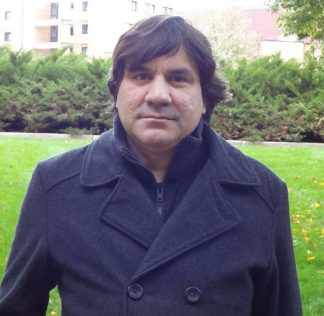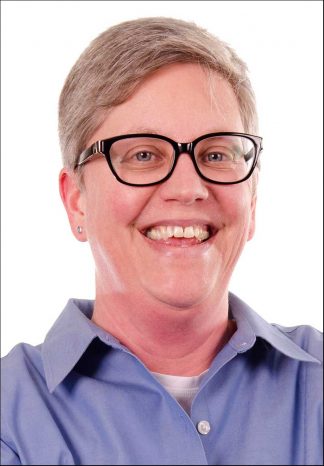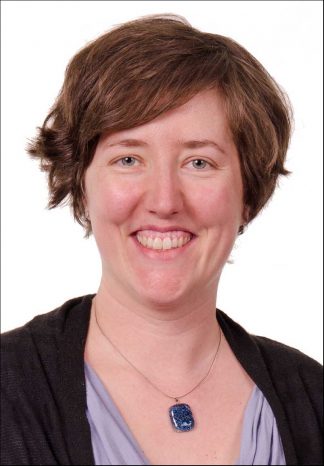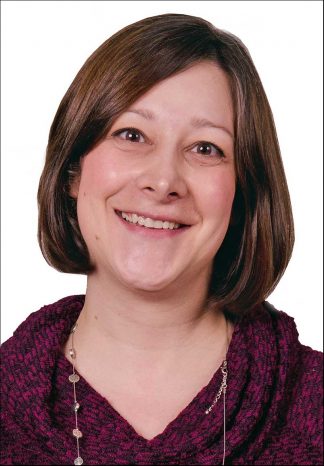By Allison Campbell-Jensen
“It was kind of a white-knuckle ride sometimes,” says Mark Desrosiers, Operations Manager for Magrath Library. “I experienced COVID-like symptoms in November and needed to self-quarantine.” With staffing so tight at Magrath, he wanted to ensure he wouldn’t infect anyone else. Fortunately, his test came back negative.
Dealing with the threat of COVID was one of the biggest challenges in re-opening four of our libraries last year. Those four operations managers — Desrosiers, Julie Dinger, Jackie Gulbranson, and Emily Reimer — talk about what they faced and, with their staffs, how they came through this transitional time.
Safety first
As Dinger and her team first thought about re-entering and re-opening Walter Library, the collective understanding of COVID still included a lot of uncertainty. Dinger says she was warned by facilities staff that everything would proceed more slowly than before, which she found to be true.
“We were quarantining books,” she says, “and staging the times of quarantines. We put notes on carts when the books could be checked in.”
Working in masks also made it tougher to communicate, she says. Initially, student employees had difficulty keeping their distance from each other. They would be wearing their masks but gathering too closely and had to be reminded of the six-foot guideline.
Student workers were stressed out, Desrosiers says, adjusting to this new reality of how to take classes and juggle their workloads.
“Maintaining their morale was part of our work that we were doing,” he says. Training them at a distance or remotely was not easy, either, says Amy Gmur, because she had to go over a lot of rules with those working in Magrath. Over time, however, the student employees did a good job of adapting, Dinger says.
New employee Anna Opryszko started in Wilson on March 31. Getting her familiar with library processes and the building meant training over Zoom and Google Meet, says Gulbranson, as well as learning from colleagues on site. “It was an interesting time,” she says. Her colleagues on-site include Richmond Kinney, Jean Magnuson, Mark Engelmann, Opryszko, Ashley Merrill, Lacie McMillin, Becky Adamski, Bill Pederson, Tina Tram, and Bill Hill.
Health Sciences Library staff were concerned about returning to campus, Reimer says. It was a challenge to talk staff through the need to return, she says, “and to help them feel as comfortable as possible about returning.” Her staff includes Melissa Aho, Carmen Elwell, Charlie Heinz (50% time), Rami Jubara, and Allison Thompson.
New approaches
A new reality called for new approaches. Starting in mid-June, Wilson Library’s Gulbranson says, Engelmann and Gmur came on site to do home delivery of requested books via mail. It’s been challenging, she says, because the Libraries hadn’t done it before; they had to troubleshoot a lot of issues. “But it’s been satisfying, too,” Gulbranson says, “because it’s one of the ways we’ve been able to help patrons get materials.”
Setting up self-checkout was another change.
“It’s a self-service thing that we jury-rigged together,” Desrosiers says. “We didn’t buy any special software or special machines; we just made up something on our own.” Self-checkout is available in all four libraries now.
To facilitate communication in Walter, Dinger and team set up a Google chat room. When staff or students went out to fetch materials from closed libraries, like math or architecture, they let others know they were leaving. When student workers had questions, staff working on-site or off-site could respond. Dinger points out that staff also needed to learn each other’s jobs, as often there would be only two of them on site.
“It was a forced cross-training,” she says. Her staff includes Amy Lewis, Rachael Clark, Chris Schlief, Lynn Tran, Jake Halverson, Charlie Heinz, and Tiffany Carlson.
The Health Sciences Library moved during the pandemic. Their new spaces are focused not on the collections but much more on emerging technologies.
“We’re experimenting with the new types of library spaces,” Reimer says, “and how they’ll function.” That and unpacking boxes.
Lighter moments
“We do our work with a great deal of humor,” Dinger says. Before Walter re-opened, she and three of her staff had an impromptu meeting. Even wearing masks and standing six feet apart, she says, “we were bubbling over at seeing each other in person.”
Unexpected encounters can relieve stress. In October, a student employee approached Gulbranson while she was opening Wilson. He was very serious as he told her about something odd upstairs: “There’s a statue and a fancy cup and a whole bunch of jelly beans on a table.” She asked Pederson to take a look. No, it wasn’t part of an arcane ritual. It was a little plastic owl, a coffee cup, and five jelly beans — a silly scene for the lost-and-found files.
Location can help lighten spirits. About the Health Sciences Library, Reimer says: “It has been an absolute treat, as somebody who is on-site a lot, to be in this beautiful new building and have the opportunities we have to see how we will be able to help people in new ways.”
Pulling together
“People have responded with compassion and caring toward each other and our patrons before anything else.”
—Julie Dinger
Nonetheless, this has been a stressful time for many.
“COVID I think it has been really hard,” Reimer says. “It has clearly changed people’s lives in a really profound way. Being on site has been hard in a lot of ways for staff. I want to recognize people’s commitment to the Libraries for continuing to work on site when maybe they would have preferred to stay home.” The staff has been tremendous, she says.
Gulbranson appreciates the creativity, flexibility, and collaborative approach of her team. When one person’s mind was occupied with home concerns, someone else would be likely to come up with a great idea. “It helps us all lift each other up,” she says.
In Walter, Dinger says, full-time staff and students have been very supportive of each other. “People have responded with compassion and caring toward each other and our patrons before anything else,” she says.
“One thing that kind of surprised me but shouldn’t was just how resilient and awesome some of our [Magrath] student workers are,” Gmur says. They would cover shifts for each other, for example. The staff, says Desrosiers, “continued providing our online reference services, chat and email, throughout the whole pandemic.”
Tough work yet important — as is all of the work our operations staff have done to re-open four Libraries’ buildings and keep them open for our U community.








